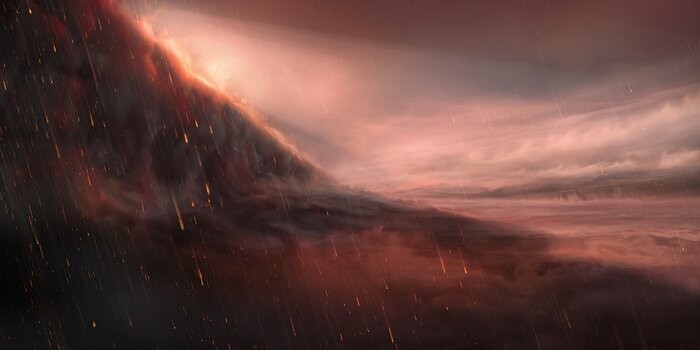The newly-minted James Webb Space Telescope(JWST) has already delivered dazzling images of deep space, but as it continues to harness its vast potential, it will soon dig for more "jewels" in the cosmos!
One of the cosmic targets of JWST is to explore distant exoplanets, and astronomers are keen on finding a bedazzled exoplanet atmosphere soon as the observatory will turn its focus on clouds rich in vaporized rock and crystals like corundum and perovskite, which create gems on Earth.

Clouds of Granite, Rubies, and Sapphires
According to NASA, the first-ever direct observations of clouds, however strange and unusual they may be, will be one of the finest approaches to understanding exoplanets.
"On Earth, a lot of these minerals are jewels," Tiffany Kataria, an exoplanet scientist at NASA's Jet Propulsion Laboratory in Southern California, said in a statement.
"A geologist would study them as rocks on Earth. But they can form clouds on exoplanets. That's pretty wild," Kataria added.
Hot giant planets are just one of galaxy's many confirmed exoplanet kinds. Due to their furiously hot atmospheres and close orbits to their stars, they may have clouds of evaporated rock.
While the idea of clouds made of granite, rubies, or sapphires may sound magical, NASA said that finding such minerals in an exoplanet's atmosphere would also be a significant advance in science.
The "spectroscopy" function of the Webb telescope divides the light it receives from far-off stars and planets into a spectrum similar to a rainbow.
This, in turn, would enable researchers to read the types of chemicals present in the atmosphere of an exoplanet.
A thorough examination of exoplanet clouds may even reveal signs of a habitable, possibly life-bearing planet, such as one that is tiny and rocky like Earth.
Hot Jupiters
Gas giants known as "Hot Jupiters," which orbit their stars very closely, become so hot that rocky elements, minerals, and metals can exist in their atmospheres as a vapor after being burnt by temperatures as high as 3,600 degrees Fahrenheit (2,000 degrees Celsius).
These minerals have previously been found in the atmospheres of exoplanets. Titanium oxide was found to have a distinctive signature in the atmosphere of a hot Jupiter dubbed WASP-19b in 2017, according to astronomers using the Very Large Telescope (VLT) at the European Southern Observatory in Chile.
According to Space.com, the VLT eventually discovered iron vapor on the hot Jupiter WASP-76b's dayside.
The dayside temperature on WASP-76b reaches a sweltering 4,000 degrees Fahrenheit (2,200 degrees C). Only 2,700 degrees Fahrenheit (1,500 degrees Celsius) were recorded on the planet's nightside, yet that's still low enough for iron to condense, according to Space.com
These substances and minerals have previously been found in exoplanetary atmospheres in a diffused form. With JWST's powerful capabilities, it will soon directly detect these minerals as clouds and spectroscopically measure their makeup.
Related Article : NASA's James Webb Space Telescope Snaps the Enchanting Turmoil of 'Cartwheel Galaxy' With Crisp Details!
This article is owned by Tech Times
Written by Joaquin Victor Tacla
ⓒ 2025 TECHTIMES.com All rights reserved. Do not reproduce without permission.




